
By Steve W. Ross - UNC-Wilmington, Center for Marine Science
August 18, 2012
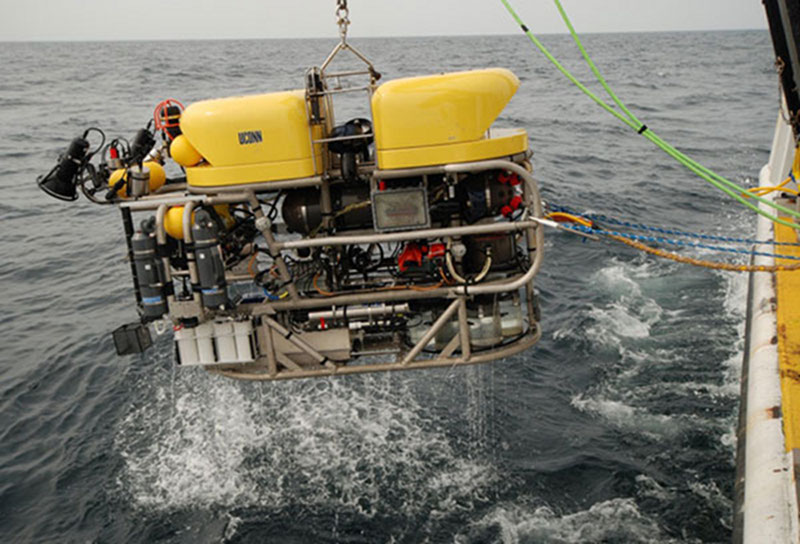
Kraken II ROV in action on the NOAA ship Nancy Foster. Image courtesy of SW Ross, Deepwater Canyons 2012 Expedition, NOAA-OER/BOEM. Download image (jpg, 100 KB).
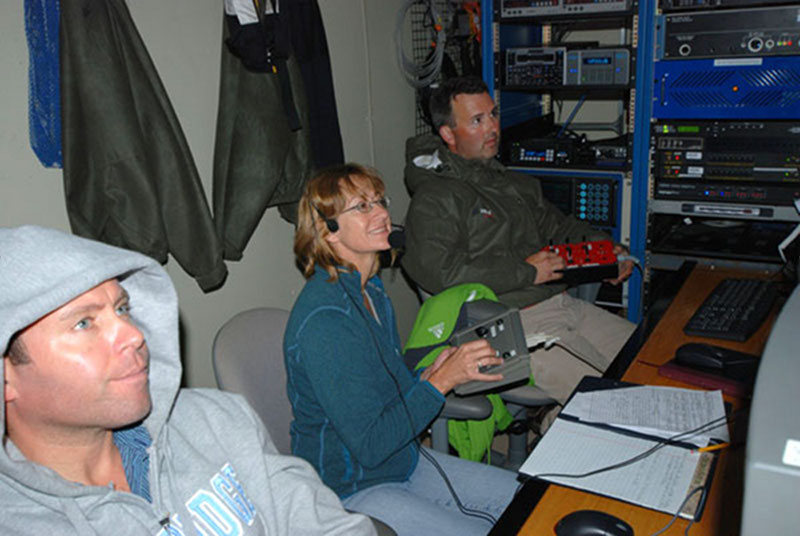
Dr. Sandra Brooke (center, co-chief scientist, MCI & OIMB), Kevin Joy (right, UCONN), and Chris Hartman (DOER) manage the ROV dive from the control van on 18 Aug. Image courtesy of SW Ross, Deepwater Canyons 2012 Expedition, NOAA-OER/BOEM. Download image (jpg, 88 KB).
Our Saturday took some time getting the ROV in the water, but we were on the bottom by about 11am, and traversed a large part of the upper north side of Baltimore Canyon. The ROV was loaded with seven tubes (quivers) to hold samples, a biobox with three chambers to keep collections cold, a coral holder, two water sampling bottles (Niskins), an instrument to measure water properties every second, two digital still cameras, and one high definition video camera. Two scientists sit in the control van to manage the science aspects of the dive, while two ROV crew operate the vehicle. The ship is also a part of the system which keeps the ROV in the right place.
This first dive traversed a diverse bottom over a depth range of about 650 to 450 m, with habitats ranging from fairly flat sand and mud to rugged high profile ridges and walls of consolidated mud. The rugged areas generally exhibited dense aggregations of a coral known as bubblegum coral (Paragorgia sp.), and shrimp were very abundant on these corals. The dominant large invertebrate was the red crab. Fishes of several species were also abundant, including witch flounder, wolf eelpouts, cutthroat eel, goosefish, and longfin hake. We collected samples of the corals for genetics, food web, and reproduction studies. Several other invertebrates were also collected to distribute among the science team. In addition, the many hours of video and the still photos will be used to document community structure (abundance and distribution patterns), habitat usage, and animal behaviors.
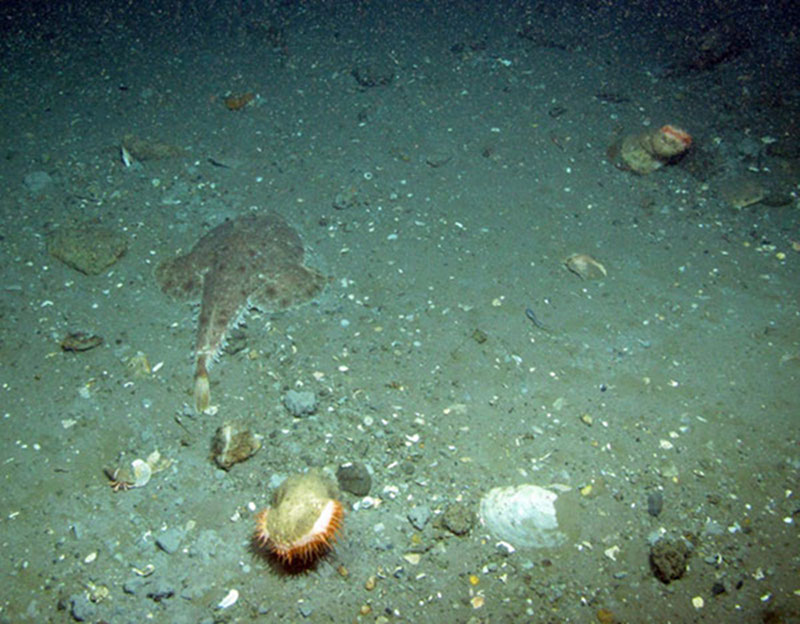
Goosefish (center left) in Baltimore Canyon, 18 Aug. Image courtesy of Deepwater Canyons 2012 Expedition, NOAA-OER/BOEM. Download image (jpg, 127 KB).
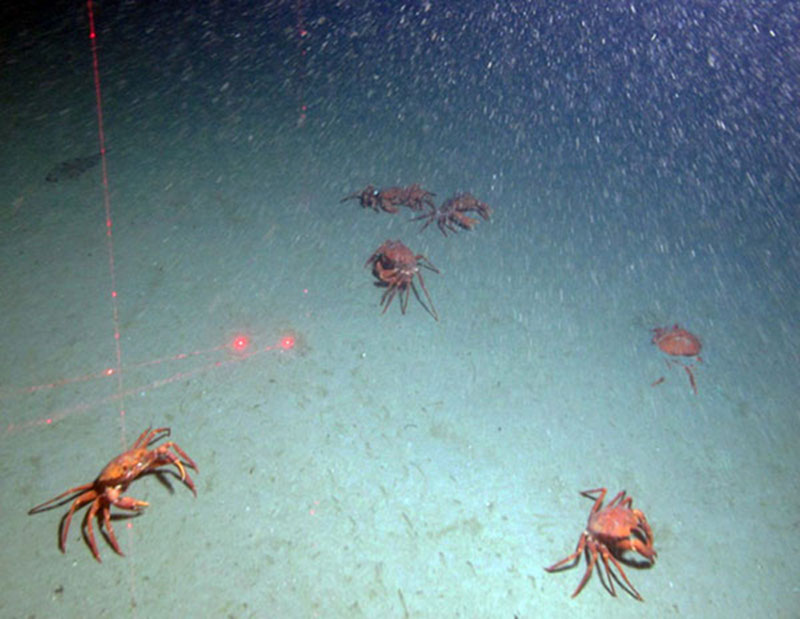
Red crabs congregating in Baltimore Canyon. Note the dense amount of particles in the water indicating a heavy potential deposition of food and sediment to the canyon floor. Image courtesy of Deepwater Canyons 2012 Expedition, NOAA-OER/BOEM. Download image (jpg, 86 KB).
The dive was very successful and we extended our recovery into the evening hours. The seas picked up and the recovery took some skilled handling on the part of ship and deck crew. Sample processing carried on late into the night hours. During this time the night shift started other activities. We stay busy with a 24 hour schedule.
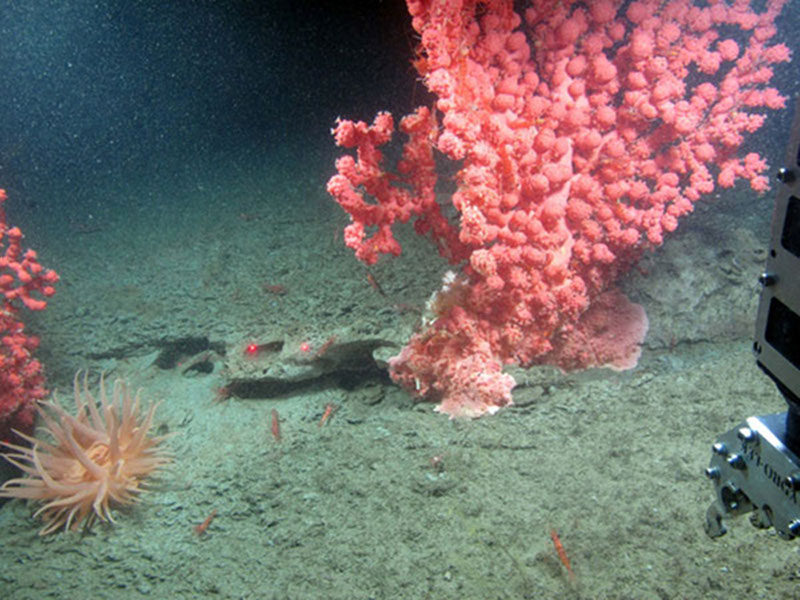
Bubblegum coral, an anemone (lower left), and several small red shrimp on a muddy ridge in Baltimore Canyon. Image courtesy of Deepwater Canyons 2012 Expedition, NOAA-OER/BOEM. Download image (jpg, 120 KB).
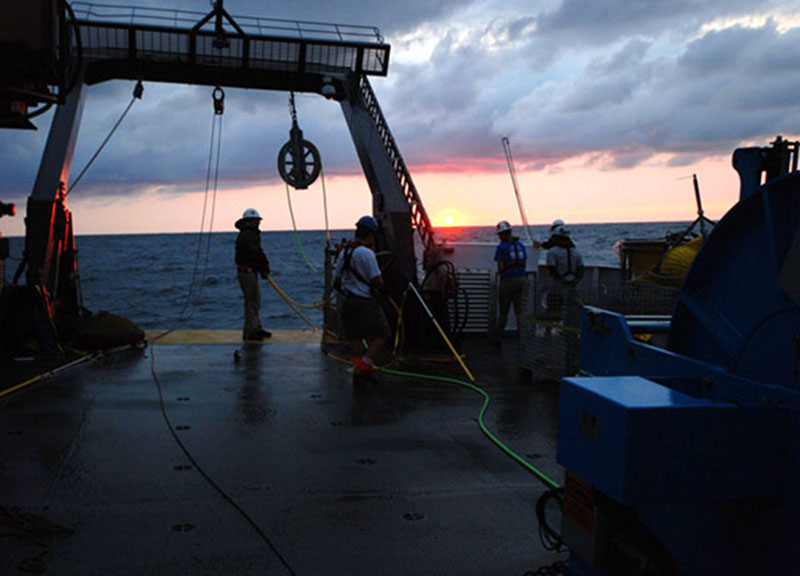
Ship and ROV deck crew await the return of the ROV from a successful dive in Baltimore Canyon. Image courtesy of SW Ross, Deepwater Canyons 2012 Expedition, NOAA-OER/BOEM. Download image (jpg, 71 KB).